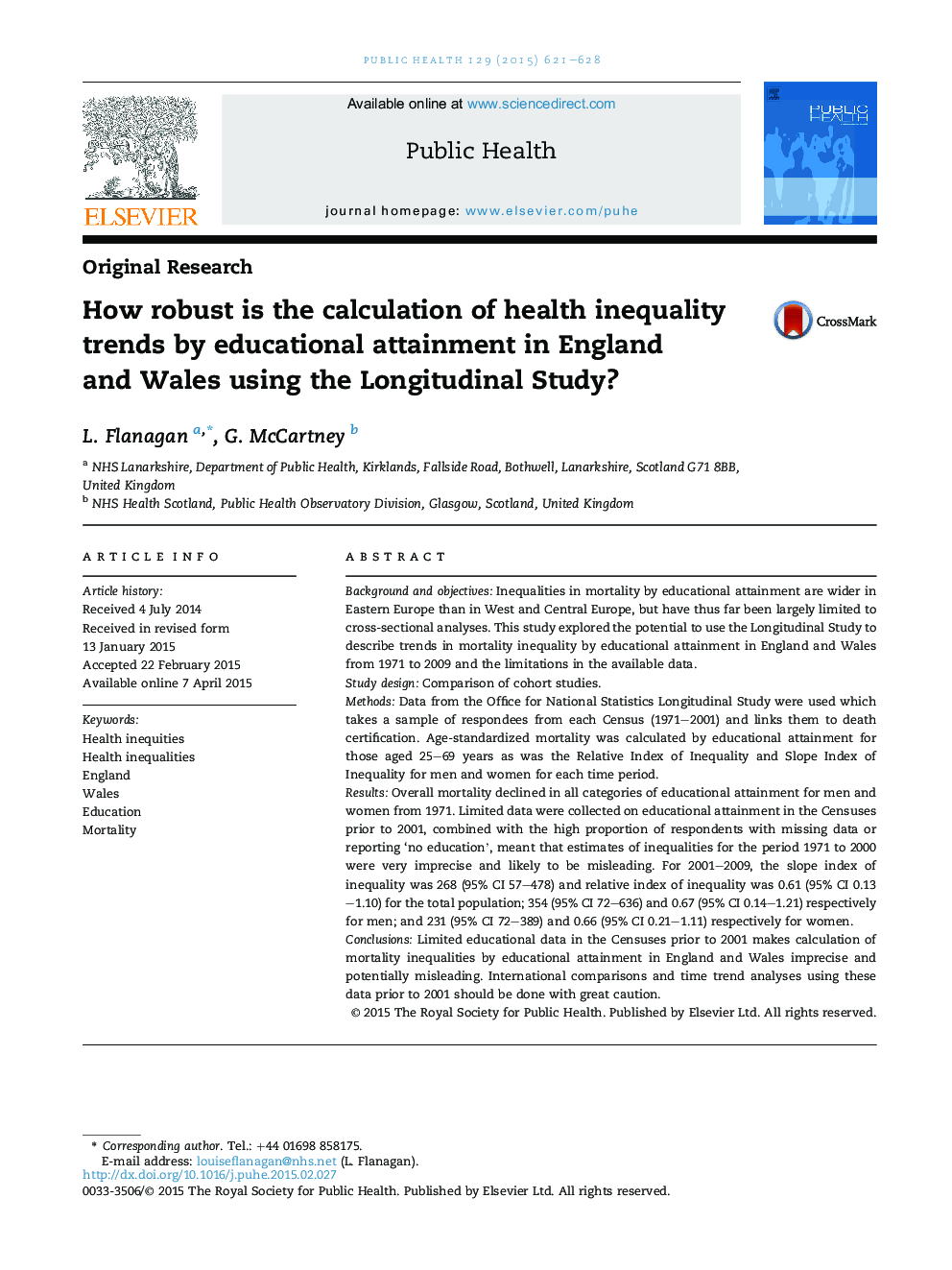| Article ID | Journal | Published Year | Pages | File Type |
|---|---|---|---|---|
| 1087334 | Public Health | 2015 | 8 Pages |
•Mortality rates by educational attainment from 1971 to 2001 in England & Wales were analyzed.•Mortality declined over time and was generally lower with greater educational attainment.•There is a high proportion of missing data, or people reporting ‘no education’, prior to 2001.•Estimates of inequalities using these data before 2001 are biased and imprecise.•Further work is required to obtain long-run health inequality trend data for England & Wales.
Background and objectivesInequalities in mortality by educational attainment are wider in Eastern Europe than in West and Central Europe, but have thus far been largely limited to cross-sectional analyses. This study explored the potential to use the Longitudinal Study to describe trends in mortality inequality by educational attainment in England and Wales from 1971 to 2009 and the limitations in the available data.Study designComparison of cohort studies.MethodsData from the Office for National Statistics Longitudinal Study were used which takes a sample of respondees from each Census (1971–2001) and links them to death certification. Age-standardized mortality was calculated by educational attainment for those aged 25–69 years as was the Relative Index of Inequality and Slope Index of Inequality for men and women for each time period.ResultsOverall mortality declined in all categories of educational attainment for men and women from 1971. Limited data were collected on educational attainment in the Censuses prior to 2001, combined with the high proportion of respondents with missing data or reporting ‘no education’, meant that estimates of inequalities for the period 1971 to 2000 were very imprecise and likely to be misleading. For 2001–2009, the slope index of inequality was 268 (95% CI 57–478) and relative index of inequality was 0.61 (95% CI 0.13–1.10) for the total population; 354 (95% CI 72–636) and 0.67 (95% CI 0.14–1.21) respectively for men; and 231 (95% CI 72–389) and 0.66 (95% CI 0.21–1.11) respectively for women.ConclusionsLimited educational data in the Censuses prior to 2001 makes calculation of mortality inequalities by educational attainment in England and Wales imprecise and potentially misleading. International comparisons and time trend analyses using these data prior to 2001 should be done with great caution.
